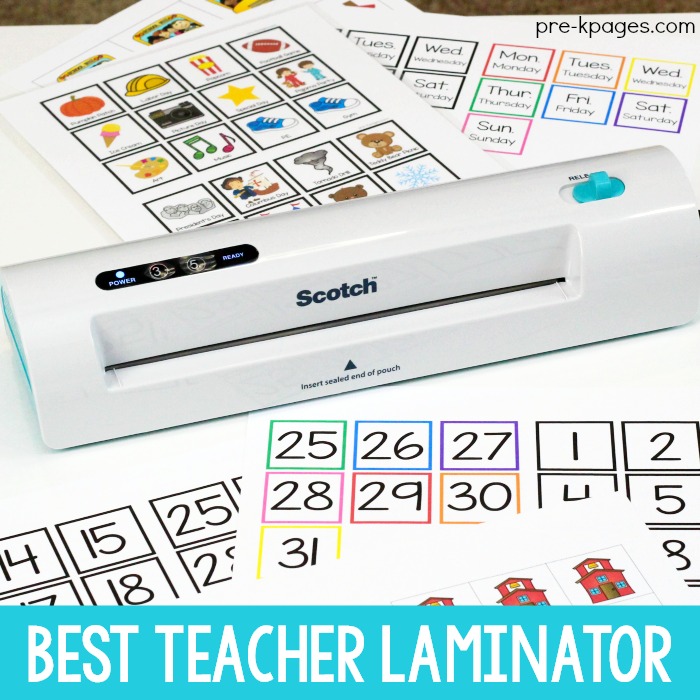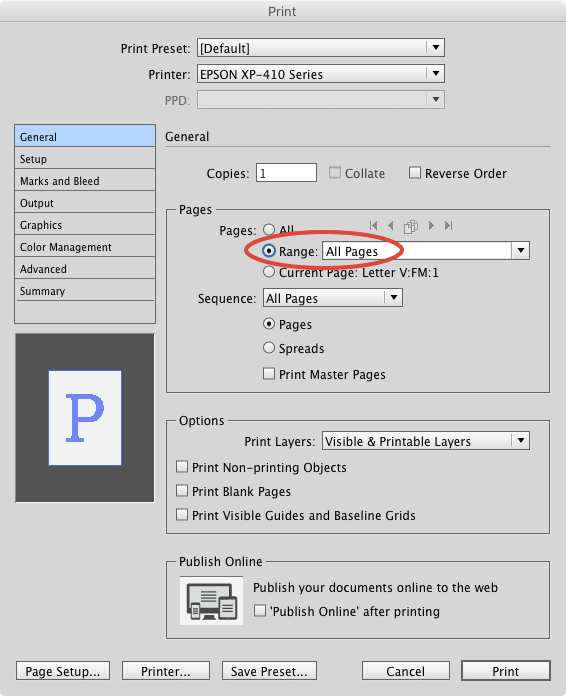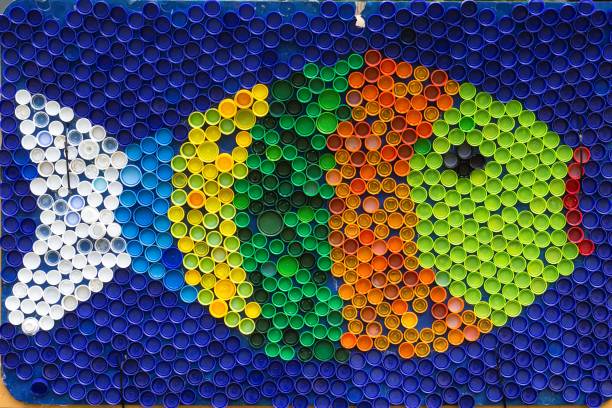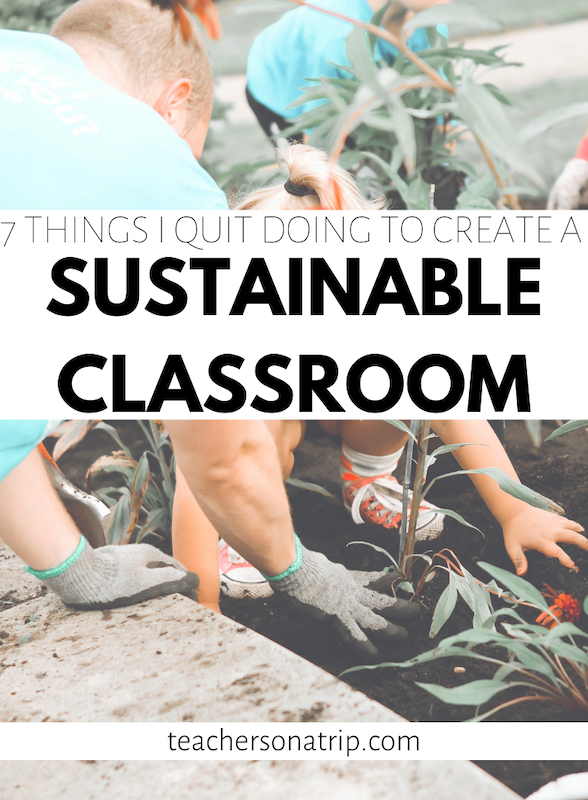
Sustainable School: What I Quit Doing in My Classroom to Be More Sustainable
I’ve only been a teacher for 4 years. Two of those years were in a public school in Oklahoma and the other two have been in an international school in Grand Cayman. I thought I was sustainably-minded and “green” back in the US. I recycled, brought reusable bags with me to the grocery, and we only owned one car. There is one thing that my new, sustainable school has taught me: No matter how environmentally-friendly we are in our personal lives, our professions are so wasteful.
I know that might sound a bit harsh. But if you’re reading this then you want to bring sustainability into your classroom and maybe even your entire school. Becoming a sustainable school sounds intimidating. However, you can spark large-scale change in your community by incorporating these strategies into your daily routines and sharing your knowledge with others. And who knows… Maybe it could lead to sustainable schools all over the world!
1. I Quit Laminating Everything
The biggest change (and most difficult for me) was to quit laminating everything. As teachers, we laminate so our printed items can remain durable and so we don’t have to reprint everything the following year. But the amount of resources needed to make the plastic film far outweighs the paper or ink used to reprint. And anything coated in plastic is non-recyclable. When you’re finally done with your laminated activities, even if it is when you finally retire, your lamination will still live on for 500 years after you die. Is it worth polluting our planet for an object that is going to outlive you by a long shot?
If you work in a classroom with slightly more responsible children, then this might not be a big change for you. It could be an easy switch to quit laminating and still having your activities being in pristine condition when the students are done. But some of you teach younger grade levels, like me. And I typically know what happens when I give my students any paper. It will come back to me being crinkled, ripped, wet, or otherwise modified from its original version.
Here are some great tips if that happens:
- Train your students to treat every item with respect. Although not everything will be reusable, you might find that teaching the importance of responsibility will allow some activities to come back to you unharmed! Also, it’s a great way to incorporate global kindness to our earth, classroom, and each other by respecting property. Take this as a learning moment and teach your students about why you don’t want them to ruin your lessons. Kids do not automatically know our thoughts, so share with them why this is important to you and allow them to help you in making our earth a better place to live!
- If it is an activity that took a long time to cut and prepare, you may consider gluing it onto a piece of cardboard. Glue takes anywhere from a couple of months to a few years to decompose, while cardboard only takes around 3 months. This is a much better environmental alternative than laminating!
Added note: try checking out digital assignments as well! This will build your students technological literacy, is better for the planet, and requires less prep! A great option to start incorporating to get closer to a sustainable school!
2. I Quit Aspiring to be a Pinterest Teacher
This one makes me laugh and cringe all at the same time. I’m fortunate enough that I now teach in a location where every teacher is more concerned with the outcome of students’ learning rather than the way it appears on the outside. But when I taught back in the US, I worked in a school that advertised and rewarded teachers who spent massive amounts of time on superficial activities.
Around Christmas time, my team embarked on an incredible activity where each day, we fully immersed ourselves into a winter holiday from around the world. It took a lot of planning and some extra time, but ultimately brought in inclusivity and diversity into our holiday season. Each student had their own suitcase and passport. We read postcards and stories from each country, and even took virtual field trips. It was cross-curricular and one of the moments of the school year that all of my students wrote about as one of their favorite memories.
At the same time, another teacher in the building wrapped each of her students’ desks in wrapping paper. I’ll admit, it was very cute. But wrapping paper is not recyclable and often not reusable. I’ll take a wild guess and say that it might have lasted a week before kids started ripping bits off their desks. So was it really worth the waste? Our administration praised her publicly and privately for going above and beyond. I find that a lot of schools work on “the show” and don’t pay attention to what lies underneath.
Pinterest Disclosure:
I do love Pinterest and I find that most ideas that I search for can be extremely meaningful. But I also feel like it can easily instill a since of self-doubt in your teaching abilities when you see all of these beautiful classrooms. At the beginning of my career, I wanted to add all the cute decorated elements in my room to make it a space that I wanted to teach in each day. But half the time they took so much effort to print, cut, and laminate and it wasn’t even going to benefit my students in meaningful ways. Just a word of warning to continue using Pinterest, but ask yourself these questions:
- Is this lesson/decoration useful for my students’ learning?
- Will this item last the length of time needed without it being laminated?
- Am I doing this for my students or for my reputation?
3. I Quit Printing “All Pages” of a Lesson
You find a lesson that is going to be beneficial for your students and will not need to be laminated. Fantastic, now it’s time to print! I used to be the person that would print “all pages”. In part because I felt like I needed to keep everything together, but also just because I had no idea about my environmental footprint. I stopped doing this after my first year, but quickly found that it wasn’t just me that participated in this ignorant decision. I constantly found title pages printed in colored ink that had been thrown into the recycling bin. Or instructions or credit pages that weren’t needed.
If you still do this, here is how you can stop!
- When you go to print, there is an option that says “Pages”. Switch the “All” option to the “Custom” option.
- Use a hyphen (-) between numbers when you want to print a large section of pages. For example: “1-5” would mean that you would print out pages 1, 2, 3, 4, and 5.
- Use a comma (,) between numbers when you want to skip the set of numbers between. For example: “1, 5” would mean that you would print out pages 1 and 5. Nothing in between.
- You can use multiples of these in the custom box. For example: If I had a 20 page document, but I did not want every page, I might type in “3-5, 9, 13-16” This means that I would end up printing pages 3, 4, 5, 9, 13, 14, 15, and 16. All the other pages would be left off.
It takes 2 extra seconds to see which pages you need to print and will ultimately save an incredible amount of resources used to make the paper and the ink. Also, think about printing in black and white as much as possible. Color ink also uses more resources to make than black printer ink. A huge step in becoming a more sustainable school is to limit unnecessary printing.
4. I Quit Ordering Everything From Amazon or Impulse Buying
Taking one moment and going back to the Pinterest debacle, I used to be the person to see those superficial Pinterest pictures and think, “How cute! I want to do that too!” So naturally, I would purchase whatever was necessary to make that happen.
Sometimes it might be binder rings off of Amazon. Other times, it might be 300 erasers from the Target Dollar Section. Then I would spend a ridiculous amount of time printing, cutting, and laminating while my order was being shipped to me. Then this tiny plastic package of binder rings (that only come in a pack of 100) would then be packaged in more plastic to help protect that little plastic container. I would use 10 of the hundred binder rings, only to find out that every other teacher in the school had a 100 pack of the same binder rings shoved into their closet of items that they’ve forgotten about.
Sound familiar?
The worst part was that this usually didn’t benefit my students in anyway. Again, it always was something that I wanted to make myself more comfortable that my students never even noticed.
If in the event that you do need some binder rings, send out an email first to see if anyone has any extra. I’m sure someone will come across their pack of 100 in their closet and beg you to take some. And if, by chance, no one has binder rings for your activity, I recommend heading to your nearest local hardware or office store and purchasing a pack of 10 or 20. It’s guaranteed not to have multiple layers of plastic (probably one layer of the box it is kept in), it won’t take multiple days to receive, and you’ll be helping your local economy instead of Jeff Bezos! Win-win-win!
5. I Quit Going for a Sonic Run
Maybe you don’t have a Sonic in your area, but you probably have something similar. I’m talking about the place where everyone flocks to order an extra-large drink to get them through the day. Our local Sonic had a teacher discount where you could get any Route 44 drink for 99 cents.
But I have plenty of reasons why you should cut out the extra-large drink orders.
- The drinks come in extremely large styrofoam or plastic cups. Both plastic and polystyrene can take 500+ years to decompose, so your 30-minute drink will last on this earth 5 times longer than you will.
- Drinking that much of anything (other than plain water) is not good for you. Yes, even diet soda. Yes, even tea. Most of those items are loaded with extra sugar. And instead of allowing you to feel better throughout the rest of the day, it will actually slow you down. I recommend having a large reusable water bottle and drinking multiple glasses throughout the day. If you need a midday boost, I recommend trying unsweetened tea, sparkling water in an aluminum can, or a kombucha!
Although this might not seem like something that falls under the “sustainable school” category, making good choices can rub off on those around you!
6. I Quit Throwing Away Good Trash from Home
When I go to the store, I always try to purchase items in aluminum or cardboard. If neither of those are available, I look for glass. And finally, I’ll buy plastic only if there is no other option and I need that item. Now, I always keep any containers left over for my classroom. We repurpose many of these containers for lessons with my students. I can use glass jars to grow plants. Plastic yogurt containers can be used for paint or dispersing small materials. Even plastic soda lids can be reused for art projects.
A great way to start implementing actions to becoming a sustainable school is to use your community resources! You can even collect containers or other useful garbage from your classroom or other school and community members!
7. I Quit Assuming A Sustainable School is Only My Responsibility
Taking action in creating a better planet for our future shouldn’t be a burden. This shouldn’t be just another thing that adds weight to our shoulders and conscience. If we share our knowledge with our colleagues, students, parents, and community, we can cut the workload down to a fraction.
Here are some great tips to get started:
- Sustainability with colleagues- Share your passions with your team. Offer your help to get them started!
- Sustainability with colleagues- Ask your administration if you can speak at a faculty meeting about changes the school can make to become more sustainable.
- Sustainability with students- Start using cross-curricular stories that incorporate an earthly component into your lessons. Search for read-alouds with environmental messages that also relate to your current topic.
- Sustainability with students- Explain why sustainability is important. Our students are not mind readers and a lot of them don’t know the resources it takes to be able to make a new product. If you are passionate about something, your students will be too. You only need to share your thoughts with them and tell them why it’s important.
- Sustainability with parents- Include your sustainability practices in your newsletter. Share with parents what you have been learning about so they can help make the changes at home. (If you’re still printing off physical newsletters, try switching to digital! Most parents prefer getting a newsletter in their emails. Only print for parents that don’t have internet or email access at home.)
- Sustainability with parents- Need cardboard, paper, plastic bags, or any other material? Get the parents involved. Not only will this help repurpose any garbage, but it also shows that you are consistent and helps create accountability in the families as well.
- Sustainability with community- Volunteer for garbage pick ups around your community and advertise it with the school and your classroom. Get everyone involved!
- Sustainability with community- Develop a sustainability night where you can share your knowledge with your school community and show them easy switches!
Related Articles: Teaching Abroad in Grand Cayman, Expat Life in Grand Cayman
Creating a sustainable school does not need to be scary or overwhelming. It’s all about starting in your own classroom. As you develop good habits, share those with people around you. You’ll start to see others coming to you for advice, and you can rest easy knowing that you are helping make the world a better place!

